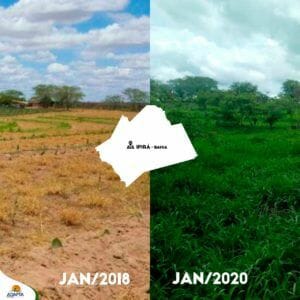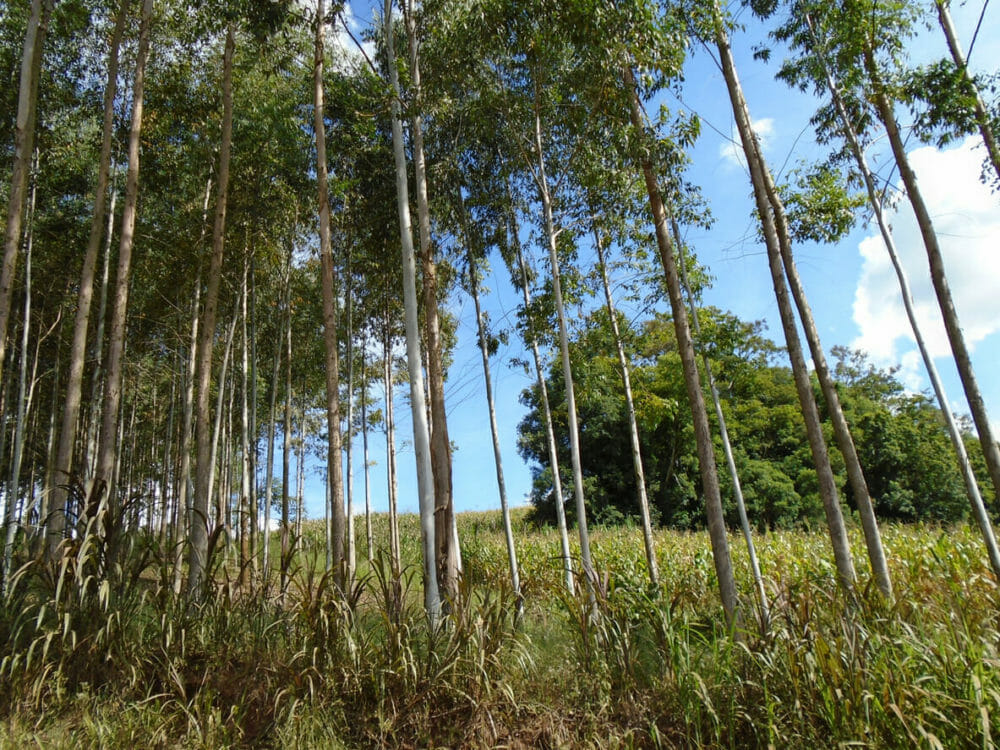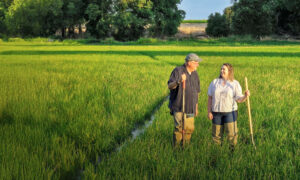Editor’s note: Daniele Cesano is CEO of Adapta Group and a regenerative farmer, producing organic tropical fruits on a 10-hectare agroforestry farm in Rio de Janeiro state, Brazil. He was also nominated as one of the three top social entrepreneurs in Brazil by the national VEJA magazine in 2017 among other accolades and is a Sustainability Science Fellow at the Harvard Kennedy School. Here he writes about his learnings in scaling regenerative agriculture, a key challenge facing the movement. Thanks to his colleague Marco Curatella and Greg Heilers for contributing to the writing.
The terms “sustainable” and “sustainability” are outdated. They indicate the “ability to sustain.” Unfortunately, we missed that train. In the last 50 years, we have done a lot of harm to our planet. The UN warns that nearly half of all terrestrial ecoregions are classified as unfavorable compared to their original form. We decreased the number of vertebrates by 60%, and we have cut about 46% of forest cover. The contribution of the agricultural industry to this eco-disaster is striking.
Economics, agriculture, and the environment
The economic sectors that include all natural-based products make up about 25% of global GDP.
Plant-based foods, textiles, construction materials, furniture, cosmetics, and pharmaceutical products add about $80 trillion per year in economic activity. However, these all require the mobilization of enormous amounts of food, machinery, packaging, fertilizer, water, and energy. So, the global agricultural and forestry sector’s environmental impact cannot be limited to their strict economic share (25%) of GHG emissions.
The world must awaken to the term “regenerative agriculture,” and substitute its principles once and for all for those of the “Green Revolution.”
Let’s be clear: Norman Borlaug, the great American agronomist who won the Nobel Peace Prize in 1970 for his invaluable contribution to increasing food production in developing countries, deserves all of our respect.

However, several decades later, very little of Borlaug’s spirit remains. Today, large market players dominate a food sector that squeezes prices through a production system based on monoculture and building dependence on often poisonous chemical components. This system is creating an imbalance in our ecosystems, and threatening the planet’s lifecycles. The positive benefits of the Green Revolution have been overshadowed by unregulated global markets and environmental externalities.
Regenerative agriculture is a means to increase farmers’ profits, sequester over 1 trillion tons of carbon, and build resilient economies through regenerating our soils and landscapes.
How do we disseminate these practices fast enough for agriculture to become a key player in the fight against climate change?
Learning from other green sectors is key
Solar photovoltaic energy, for example, received major attention during the first energy crisis of the 1970s, when oil prices peaked to $100/barrel. It took 40 years to increase the efficiency of the PV system. When that happened, early adopters like Germany, Spain, and Italy supported it through tariffs and tax breaks. Billions of dollars from the financial sector brought energy prices down further, creating an industry forecasted to reach $220 billion by 2025.
Regenerative agriculture needs to follow a similar path. In the renewable energy sector, the utilities are the market makers. They generate or purchase the largest share of clean energy.
In the food sector, local, regional, and global food corporations own the largest share of consumer markets. The top 10 brands alone have 40% of the market share in specific segments; significant power to change the status quo. To make a truly regenerative (r)evolution, there must be close partnership between farmers and corporations. The financial sector’s role is to provide capital, while the public sector supports all market players through specific programs and incentives.
How to scale regenerative agriculture
By working directly with over 800 farmers, as well as several cooperatives and companies during the last decade, the Adapta Group team has learned that developing a fertile ecosystem for institutional investors to scale regenerative agriculture relies on these seven key factors:
1. Companies must set specific social and environmental targets, then pursue targets through creative solutions
Commitment is essential. For example, it is easy to proclaim a carbon-neutral goal, and much more difficult to achieve and prove it publicly.
Procurement departments of large food companies previously rarely considered the impact of their supply chain. What mattered was volume, quality, and constant supply. These companies were built upon degenerative production patterns with little farmer-industry integration. The carbon footprint is not solely the responsibility of farmers, but also corporations who purchased products with unknown environmental impacts.
Why not change the pricing mechanism to revert a share of the product price to compensate farmers’ efforts to achieve a higher environmental standard? This makes business sense, as healthier ecosystems are more climate-resilient, reducing supply chain vulnerabilities.
2. Development of machinery and processes that decrease mechanical and labor costs of regenerative practices
Today’s agricultural machinery was developed to serve industrial agriculture. These machines compact the soil, are very costly, and often have only one specific use.
We need a new set of lighter, more flexible tools. Three examples:
- ïStandardizing biological pest control;
- ïImproving tree pruning to use clippings directly as mulch in agroforestry systems;
- ïLight tractors capable of performing three or four different duties while out in the field.
These new tools and practices will create new business opportunities to serve the farmer groups which adopt regenerative practices.
3. Partnership with solutions providers who manage regenerative supply chains at scale
Food processing companies purchase raw materials and transform them into consumable products; regenerating their supply chains is not necessarily their business.
Partnering with solutions providers who possess a track record designing and managing successful, largescale, turnkey regenerative systems is critical for corporations to achieve their regenerative objectives.
4. Use of Digital Agriculture and Artificial Intelligence (AI) to speed up the learning curve
Climate monitoring through sensors optimizes and de-risks certain climate challenges that supply chains face today. The collection and correlation of technical, socioeconomic, and environmental information at different scales, as performed by AI systems, will determine key risk factors, and support strategic decisions. Ultimately, corporations need to quickly identify the most successful farmers and the types of interventions most likely to build resilience and regeneration without compromising economic viability.
5. Innovative financing mechanisms
Often, farmers face shrinking margins, hold significant debt, and are unable to find the capital to restructure their farm. FinTech and alternative financing mechanisms are essential to provide farmers the capital they will need to transition to regenerative.
Corporations may help mobilize capital by acting as an anchor company, providing credit guarantees through long term purchasing contracts. Continuous technical assistance would also de-risk farmers’ investments, helping them apply proceeds cost-effectively.
6. Tracking product quality, origin, and impacts through traceability systems
Blockchain and other traceability systems will see increasing use to track the origin of the products, as well as their socio-economic and environmental impacts. Consumer access to information about a product’s nutrient contents, safety concerns, and value chain fairness to farmers will directly affect product price.
7. Government incentives for regenerative farming
Governments may not be the early movers in the market, but they will play a pivotal role to scaling up. We do not yet have clear carbon, water, or biodiversity markets with official prices for ecosystem services rendered through regenerative practices. To develop these, we need to take away subsidies and incentives for farming practices that decrease carbon content in soils, then issue incentives for improving soil health.
This new support system will encounter significant resistance, especially from chemical companies and conventional farmers. As such, a transition period will be necessary.
We can see the rise of this new production paradigm. The most successful companies are already integrating components of their supply chains through pilot projects or innovative startups. But, the term “regenerative agriculture” will only acquire its true meaning when the first company is able to prove integration and positive socioeconomic and environmental impacts. Who will be the first?
Want more regenerative agriculture insights? Check out our section on the topic here, including Lauren Stine’s Regen Ag Renegade column with leaders in the movement.




